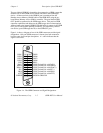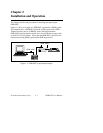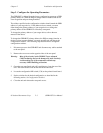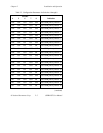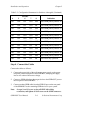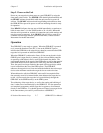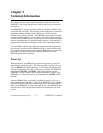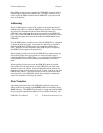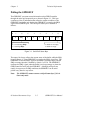Chapter 2 Installation and Operation
© National Instruments Corp. 2-7 GPIB-BUF User Manual
Step 5. Power on the Unit
Power on your target device then power on your GPIB-BUF by using the
front panel rocker switch. The POWER LED should light immediately and
the READY indicator should blink while the unit executes its power-on
self-test. The READY indicator should stop blinking and remain on when
the GPIB-BUF has passed its power-on self-test indicating the unit is ready
for operation.
If the READY indicator does not start to blink immediately or continues to
blink for more than 7 s for the 256 KB model or 20 s for the 1 MB model
after the unit is powered on, recheck all connections and switch settings and
retry the power-on sequence. If the READY light still fails to come on or
continues to blink longer than the specified time limits, contact National
Instruments for further instructions.
Operation
The GPIB-BUF is now ready to operate. When the GPIB-BUF is powered
on, it asserts the Interface Clear (IFC*) line on the GPIB OUT port to
initialize the GPIB link to the target device; therefore, ensure that the GPIB
target device is powered on before the GPIB-BUF.
When the GPIB-BUF is addressed to listen, all data sent to the unit via the
GPIB IN port is input directly to memory by the on-board DMA controller
at speeds up to 900 kbytes/s and is stored in the internal data buffer. The
actual speed depends on the speed of the GPIB talker as well as the speed of
other GPIB devices that are addressed to listen along with the GPIB-BUF.
Thus, the speed is no longer limited to the speed of the target device which
is now isolated from the rest of the GPIB system. The GPIB-BUF
addresses the target device to listen and sends the buffered data to the target
device at the maximum rate that the target device can receive the data.
When addressed to talk, the GPIB-BUF waits until it has emptied all the
data currently stored in its internal buffer, then addresses the target device
to talk. All data sent by the target device is passed directly through the
GPIB-BUF to the GPIB listener(s) on the GPIB system.
The addressing of the target device, as well as the routing and buffering of
data, is taken care of automatically by the GPIB-BUF. All data operations
are completely transparent, and the target device appears to be connected
directly to the GPIB bus. You should operate and control your target device
in the same manner you would if you did not have a GPIB-BUF.




